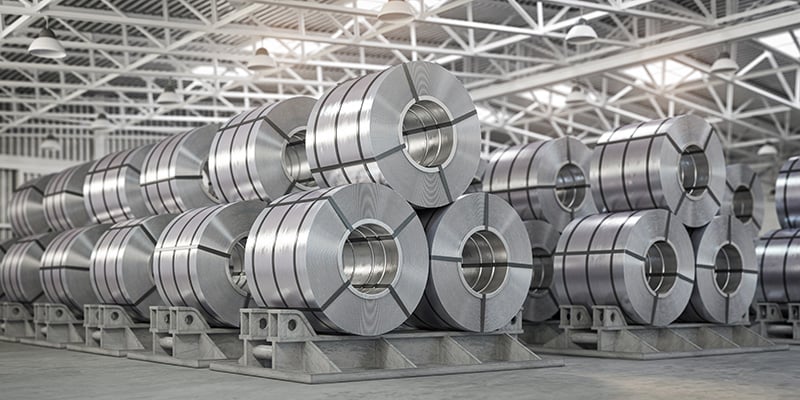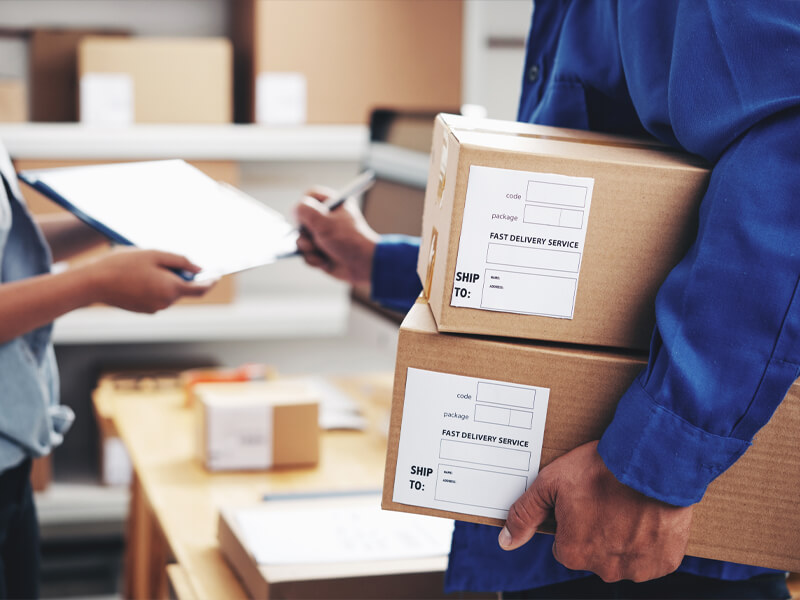Optimum Protection: Industrial Packaging Solutions Tailored for Success
Wiki Article
Effective Industrial Recycling Solutions for Lasting Packaging: A Comprehensive Guide
In today's increasingly environmentally-conscious world, the need for lasting packaging remedies has actually never been higher. To meet this need, organizations across industries are actively seeking effective industrial recycling options. Nonetheless, browsing the complex landscape of lasting product packaging can be testing without a thorough overview. That's where this thorough overview on efficient commercial recycling options for lasting packaging can be found in. By checking out key areas such as packaging material option, developing for recyclability, executing recycling infrastructure, teaming up with recycling partners, and monitoring and measuring reusing success, this overview will certainly outfit you with the knowledge and devices necessary to make informed decisions and drive positive adjustment within your organization. Whether you're a product packaging expert, sustainability supervisor, or simply interested in the subject, this guide will certainly offer beneficial insights and methods to help you browse the world of lasting packaging.Packaging Product Selection
The choice of product packaging products plays an essential duty in guaranteeing the sustainability of commercial reusing solutions. The selection of products is key in reducing environmental impact and making best use of reusing performance when it comes to sustainable packaging. Selecting the right materials can aid reduce waste generation, save resources, and promote a circular economy.One essential factor to consider in product packaging material selection is recyclability - industrial metal packaging. Products that can be conveniently recycled and incorporated back right into the manufacturing cycle are preferred. Products like cardboard, paper, glass, and certain kinds of plastics can be recycled numerous times without shedding their quality. On the various other hand, products that are tough to reuse, such as combined plastics or non-recyclable composites, can produce obstacles for the recycling procedure and might finish up in incinerators or garbage dumps.
One more factor to consider is using eco-friendly and renewable materials. Product packaging made from eco-friendly resources, such as plant-based plastics or biopolymers, can aid minimize dependency on nonrenewable fuel sources and reduce environment change. In addition, naturally degradable products damage down naturally with time, reducing the build-up of waste in landfills.
Moreover, the weight and volume of product packaging materials should be decreased to lower transportation expenses and energy usage. Lightweight materials not only require less sources throughout manufacturing yet also add to lower carbon exhausts during transport.
Creating for Recyclability
Packaging designers should focus on the use of products that are commonly accepted for reusing and have developed reusing infrastructures. Materials such as glass, aluminum, and certain types of plastic, like PET and HDPE, are generally reused and ought to be liked over products that are challenging or expensive to reuse.One more essential factor to consider in making for recyclability is the elimination of unneeded parts or products. By decreasing the variety of layers, coatings, and extra components, packaging can be made easier and simpler to recycle. In addition, developers ought to intend to decrease using mixed materials, as they can make complex the reusing procedure.

Implementing Recycling Framework
Reliable execution of recycling facilities is crucial for the success of industrial reusing solutions. Without appropriate infrastructure in place, the recycling process comes to be inefficient and ineffective, preventing the overall goal of sustainable packaging.To implement reusing infrastructure properly, numerous essential variables need to be taken into consideration. Firstly, there must be an efficient collection system that facilitates the splitting up and collection of recyclable materials. This can consist of marked reusing containers in public spaces, in this contact form addition to collaborations with waste monitoring firms for curbside pickup and sorting.
As soon as collected, the recyclable materials require to be transferred to reusing centers in a prompt way. This calls for effective logistics and transportation networks, guaranteeing that the materials reach the suitable facilities right away.
At the recycling centers, advanced sorting and handling technologies must be in location to separate various sorts of materials efficiently. This includes using automated arranging equipments, optical scanners, and hand-operated sorting strategies.
Additionally, there must be a robust market need for recycled materials. This can be achieved with collaborations with makers and markets that make use of recycled products in their manufacturing procedures. Creating a stable market for recycled products incentivizes the recycling industry and promotes the round economic climate.
Working Together With Recycling Partners

One key element of working together with reusing partners is the facility of clear communication networks. It is necessary to establish open lines of interaction to promote the have a peek at these guys exchange of details, updates, and feedback. This permits both events to stay educated regarding the development of reusing efforts and attend to any kind of challenges or issues that may occur.
Additionally, collaboration can entail joint initiatives in designing and carrying out reusing programs. Reusing partners can supply valuable understandings and support in establishing reliable collection systems and determining one of the most suitable recycling modern technologies. By working with each other, organizations and reusing partners can enhance the reusing process and lessen waste.
Furthermore, collaboration can extend past the operational facets of reusing. It can additionally include advocacy and education and learning campaigns. By joining forces, services and reusing partners can raise awareness about the significance of reusing and advertise the adoption of lasting packaging techniques amongst consumers and other stakeholders.
Monitoring and Measuring Recycling Success
To make sure the efficiency of commercial reusing remedies and the success of lasting product packaging goals, it is essential for services and their get redirected here reusing companions to establish an extensive system for monitoring and determining reusing success (processing company). Tracking and determining recycling success enables businesses to assess the effect of their reusing efforts, determine locations for enhancement, and established meaningful targets for future progressOne way to track reusing success is through the usage of information collection and evaluation devices. By gathering data on the amount of product packaging waste generated, the percent of waste that is reused, and the kinds of materials being recycled, services can obtain valuable insights into their reusing performance. This data can after that be analyzed to determine fads, patterns, and areas of inefficiency.
Another essential aspect of monitoring and gauging reusing success is establishing standard and clear metrics. This enables organizations to compare their performance versus sector benchmarks and track their development in time. Metrics such as recycling rates, waste diversion rates, and greenhouse gas discharges can offer a measurable measure of a service's reusing success.

Verdict
Finally, executing effective commercial recycling options for lasting packaging requires careful factor to consider of packaging material choice, developing for recyclability, implementing recycling infrastructure, collaborating with reusing partners, and tracking and measuring reusing success. By incorporating these methods, companies can contribute to a much more lasting and environmentally-friendly strategy to packaging, lowering waste and promoting the circular economic situation.By discovering essential locations such as packaging product selection, designing for recyclability, executing reusing facilities, collaborating with reusing partners, and monitoring and determining reusing success, this guide will outfit you with the understanding and tools needed to make enlightened choices and drive favorable change within your company. Packaging designers should focus on the use of products that are widely accepted for reusing and have actually developed recycling facilities.Cooperation with recycling partners is necessary for the successful implementation of commercial reusing solutions and the success of sustainable packaging objectives. By signing up with pressures, services and reusing companions can raise recognition about the value of recycling and advertise the adoption of sustainable packaging techniques amongst customers and various other stakeholders.
By collecting information on the amount of product packaging waste created, the percent of waste that is reused, and the kinds of products being reused, organizations can gain valuable insights right into their reusing efficiency.
Report this wiki page